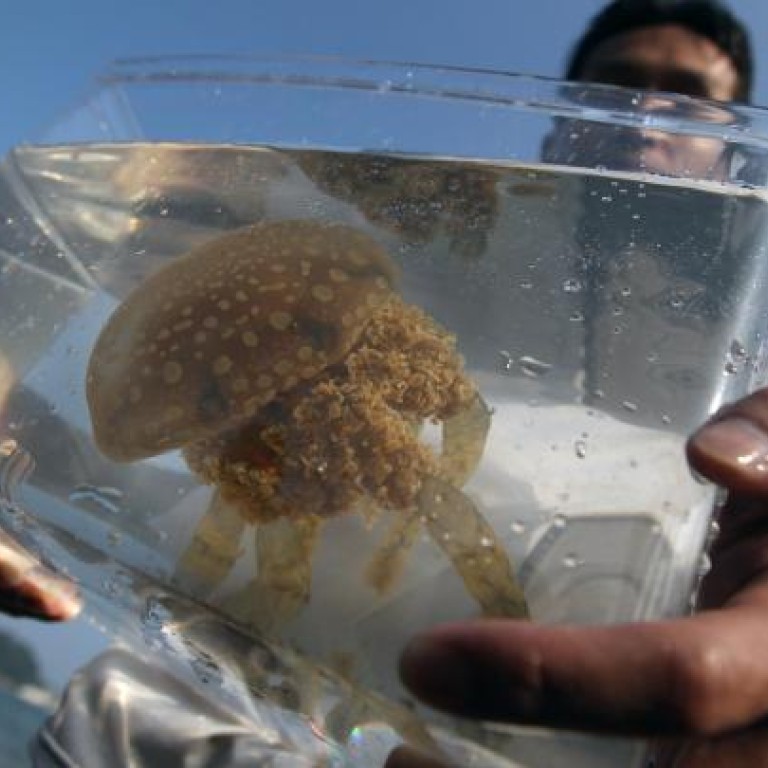
At the village called The Very End, locals fear the end of peace
Tai Mei Tuk - the name means 'the very end' - is a tranquil spot facing upheaval thanks to tourism projects, including an artificial beach
At the eastern tip of the Tai Po district, near the Plover Cove reservoir, lies a picturesque spot that is popular with holidaymakers.
Like many other undeveloped parts of Hong Kong, however, Tai Mei Tuk's natural beauty and serenity has proved to be its curse.
The name in Chinese means "the very end", and that is exactly what some villagers fear may be ahead for their tranquil environment as the government presses ahead with plans for an artificial beach along the ecologically rich shoreline at nearby Lung Mei, and as new tourism projects take shape.
"Locals fear loss of Lung Mei beach" Video by Hedy Bok
Kanas Ng, who visited Tai Mei Tuk with her three-year-old son during the Chung Yeung festival, agreed. "The beach? I'm totally opposed to it … 200 per cent," she said.
The artificial strand is among a handful of development plans approved for the area in recent years, including a 25-storey Goddess of Mercy statue and a couple of resort-style spas - that environmentalists say will alter a rural landscape that has so far been spared tourist construction and is still untouched by commercialism.
Tai Mei Tuk's name refers to its geographical location: it is the furthest of 14 inhabited villages along the Ting Kok coast.
Apart from early morning racers in their Lamborghinis and barbecue-and-bike crowds at weekends it is a quiet place, with air so clean, locals say, that asthma sufferers can live there without fear of a relapse.
The government however, remains determined to build the beach.
Officials told a press conference yesterday that the beach should be ready in less than three years to serve an estimated 1.25 million people from Tai Po, Sha Tin and North districts.
According to an environmental impact report, commissioned by the Civil Engineering and Development Department and released in 2007, the site would affect "mainly low-quality habitats".
"The potential construction and operational impacts on the natural habitats are considered to be low," it said.
Environmentalists, long-time villagers and eco-tourists think otherwise.
During the Chung Yeung Festival on Tuesday, families from all corners of the city gathered to look at the mangroves that they believe will soon disappear. Most were parents who brought their children to seek starfish, small crabs or jellyfish.
Kwok, now busy organising weekend tours for interested people, asked: "After the animals have died and the government still insists it's OK, who will compensate society in the end?"
Residents also fear that the beach will cause traffic and safety concerns.
May Tsang Pui-man, who has lived in Lung Mei with her family for eight of the past 10 years, said: "When I first moved in here a decade ago, there weren't even the [now popular] green minibus routes."
Residents then had to rely on a van to commute to central Tai Po.
In 2005, Tsang, her husband and his songbirds moved to central Tai Po and returned to Lung Mei two years later to find traffic conditions much worse.
"Once, when my family drove out to buy food for a hot pot dinner, we were stuck half way," she said. "In the end we had to eat outside."
The only road connecting Lung Mei and Tai Mei Tuk with the rest of Tai Po is the narrow Ting Kok Road, with just one lane each way in places.
The government has yet to provide details of plans to widen the road to accommodate an anticipated increase in visitors, and both vehicle and human traffic is expected to shoot up when a number of tourist projects, already under way in Ting Kok, are completed. Two kilometres west of Lung Mei is an under-construction monastery that will house the world's second tallest Mercy Goddess, or Guanyin , statue. The head of the statue is already completed, though the body was still wrapped with scaffolding earlier this week. It is scheduled to open next year.
At least two spa hotels are also planned for Ting Kok. One, by the developer Wheelock, involves 34 blocks, each of three storeys, near Lo Tsz Tin village, one block away from the beach site at Lung Mei. In all, 237 hotel rooms are involved, according to the plan approved by the Town Planning Board in 2009.
Another application is awaiting a decision by the board. Submitted last year, it involves a 230-room project and wedding chapel west of Lung Mei.
Apart from tourist development, housing projects have also flourished over the years. One property agent in the area said more people have shown interest in renting as well as buying flats in the area, helping to boost the property market.
With the artificial beach plan now in the pipeline, the agent added, property prices in some cases have doubled in just a year, especially for flats near the proposed beach.
Prosperity may be finally descending on this tranquil and isolated holiday destination - but, residents ask, at what cost?

